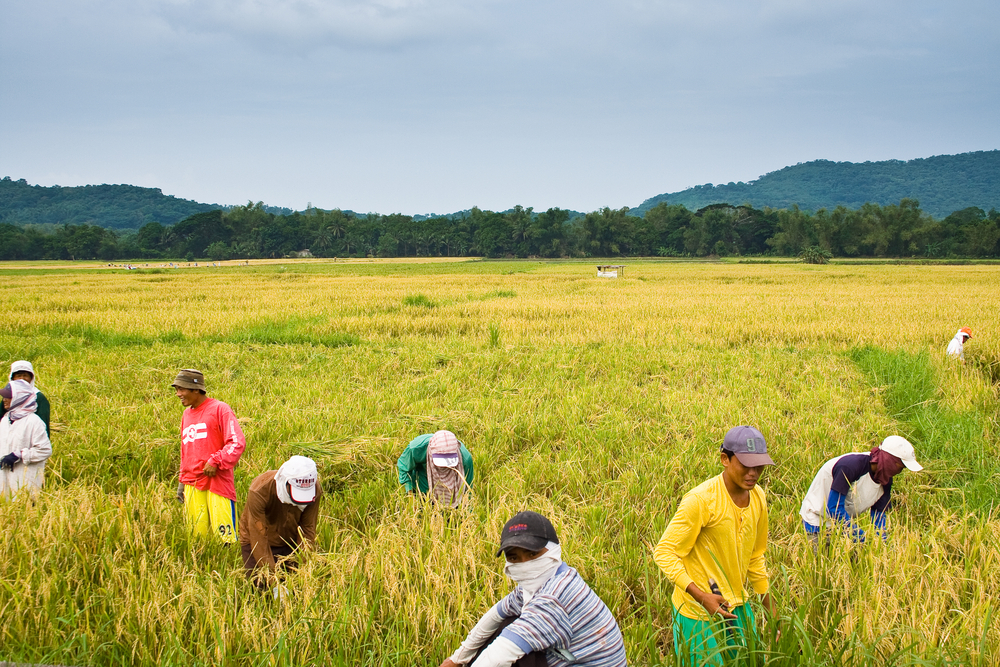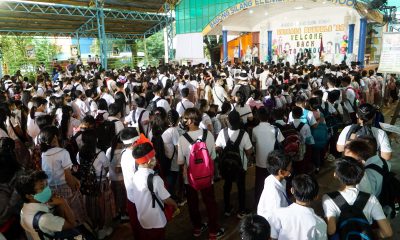Breaking
DA pushes for creation of niche market for Adlay
After the successful inclusion of adlay or adlai into its mainstream research and development program, the Department of Agriculture now wants to build a niche market for the grain by trumpeting its nutritional value to encourage more eaters and urge farmers to continue growing the crop.
Adlay, known as “Job’s tears” in most of East and Southeast Asia, belongs to the same family of grasses or weeds such as wheat, corn, and rice.
At last week’s National Adlay Farmers’ Field Day and Techno-Forum in Barangay Legarda Uno in Dinas, Zamboanga del Sur, Agriculture Secretary Proceso Alcala declared adlay as one of the country’s “best kept secret” and a potent weapon against hunger in a climate-changed world.
“Given that we are in an El Nino year, adlay gains greater relevance as a drought-resistant staple crop,” he told the 1,000 participants composed of farmers, local government unit and private sector representatives, investors and other stakeholders from Mindanao and other parts of the country.
“Prior to becoming a Cabinet secretary – I was still a congressman then – I came to know and tasted adlay through a friend from Mindanao,” Alcala said. “We were worrying about an impending El Nino in the province, and he told me about this drought resistant crop from where he came from which was both delicious and nutritious. And he was right. From then on, I started to patronize it. We brought some seeds to Quezon and propagated it there.”
It was the reason, he said that, that upon his appointment as agriculture chief, his first actions to order research and development activities on the adaptability and propagation of the crop in all DA research stations nationwide, and to create new adlai-based products.
At the two-day techno-forum, these DA research stations showcased various sweets and delicacies made of adlay. The research station from Northern Mindanao allowed visitors to taste test its adlay crackers and California maki or sushi, while the one from Southern Tagalog featured its adlay “kalamay” and cookies. The research station from Central Visayas offered visitors coffee and flour made of the grain.
Given the versatility of the grain, the DA-Bureau of Agricultural Research will spearhead a study on how to package and sell adlay, both here and abroad, as a high-fiber cereal suited for weight-conscious people.
Alcala is initially eyeing Japan as a possible market for the grain, as there have been already been Japanese importers who expressed strong interest to buy the commodity when they visited the country in 2012.
The agriculture chief cited several studies that suggest adlay contains three times more calories and nearly six times more protein compared to rice. Apart from its nutritional value, adlay has been known to cure diabetes and some types of allergies.
Since 2010, DA has been promoting adlay as a staple food under its food security blueprint called the Food Staples Sufficiency Program. Part of the initial efforts was the conduct of adaptability trials led by DA-BAR in strategic locations nationwide to assess the performance of the different varieties of adlay.
These areas include Region 9 (Midsalip in Zamboanga del Sur); Region 4A (Lipa City, Batangas); Region 5 (Pili, Camarines Sur); Region 2 (Ilagan, Isabela) and Region 10 (Malaybalay in Bukidnon).
In these trials, 11 adlay varieties were identified: gulian, kinampay (ginampay), pulot (or tapol), linay, mataslai, agle gestakyan, NOMIARC dwarf, jalayhay, and ag-gey. From these varieties, three are commonly grown and found in the country: gulian, kinampay (or ginampay), pulot (or tapol).
DA-BAR is currently coordinating 32 adlay-related projects involving state colleges and universities and other R&D institutions across the country.
Jennifer Remoquillo, DA’s national coordinator for high value crops development program, said that the adlay program revolves around three central tasks: encourage increased consumption of the cereal in various product forms; area expansion and achieve better yields through continuous technology demonstrations and making quality seeds available to farmers; and promotion of better harvest and postharvest practices and facilities.
For the past two years, DA has allocated P26 million for these activities, including P16 million for 2014.
To inspire more farmers plant the crop, Alcala asked Dir. Constancio Alama of DA Regional Field Unit 9 to start buying the adlay harvest of farmers in Zamboanga Sibugay so there will be assured market for their produce. Portions of it will be distributed as seedlings in other parts of the country, Alcala said. According to DA-BAR, prevailing buying price for adlay seeds in Mindanao is at P50 per kilo and P25-30 per kilo for adlay grits.
The grain is largely used in the region, notably Zamboanga del Sur, as an alternative to rice and as ingredient for native wine called pangasi).
Press release issued 10 September 2014






















